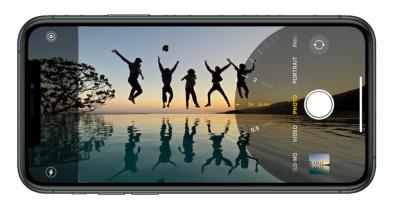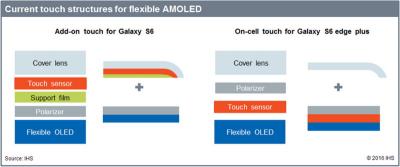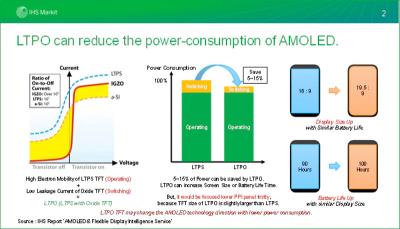Towards the end of 2019 LG Display started to supply Apple with 6.1" film-touch OLED flexible displays for its 2020 iPhone, and IHS Markit now says that these shipments propelled LGD's OLED smartphone market share to 10.8% in Q4 2019 (up from only 2.1% in Q3 2019).

In fact LGD now says that mobile OLED revenues make up for 36% of its total revenues in Q4 - which is higher than its OLED TV revenues for the first time ever.
Samsung Display is still the largest OLED smartphone maker, with a 81.2% market share (down from 90% in Q3 2019). The other large players are Visionox (4.1%, up from 1.4% in Q3 2019) and BOE (1.6%, down from 3.9% in Q3 2019).
Samsung is still the dominant Apple iPhone supplier, as it supplies it with the same 6.1" film-touch OLED panels that LG does (in a 50:50 split) - but it also supplies the 5.4" and 6.7" on-cell touch (Y-OCTA) panels.
According to a report from Korean in early 2020, LG Display is set to update its E6 flexible OLED production line to support two new technologies - LTPO and on-cell touch, which LG calls TOC. ETNews says that LG's E6 line is dedicated to Apple - currently it produces 6.5" 2688x1242 OLEDs used in the iPhone 11 Pro Max.
An on-cell structure enables thinner panels as the touch sensor is deposited directly on the encapsulation (TFE) layer. The optical features are also better as the touch layer is below the polarizer and enables the use of a non-ITO grid, there's no need for a support film (see image above) and the number of layers is lower.

Low-Temperature Polycrystalline Oxid, or LTPO, is an OLED display backplane technology developed by Apple. LTPO combines both LTPS TFTs and Oxide TFTs (IGZO, Indium Gallium Zinc Oxide). LTPO is applicable for both OLED and LCD displays, actually, but this backplane technology is likely to be used exclusively in high-end OLED displays

In LTPO, the switching circuits are using LTPS while the driving TFTs will use IGZO materials. This could lead to a power saving of around 5-15% compared to the currently-used LTPS backplanes. The main drawback of LTPO, however, is that the IGZO TFTs are larger and so the display density may be compromised.
In September 2014 Apple introduced the world's first device to use an LTPO backplane - the Watch Series 4. Compared to the Watch Series 3, the new series has a larger AMOLED display - 1.78" 448x363 on the 44 mm watch and a 1.57" 394x324 one on the 40 mm model. LG's current LTPO OLED displays are produced at LG's E2 fab in Paju, and in the future it will move the production to the E6 line. It is also possible that Apple is aiming to adopt LTPO in larger iPhones displays in the future.


